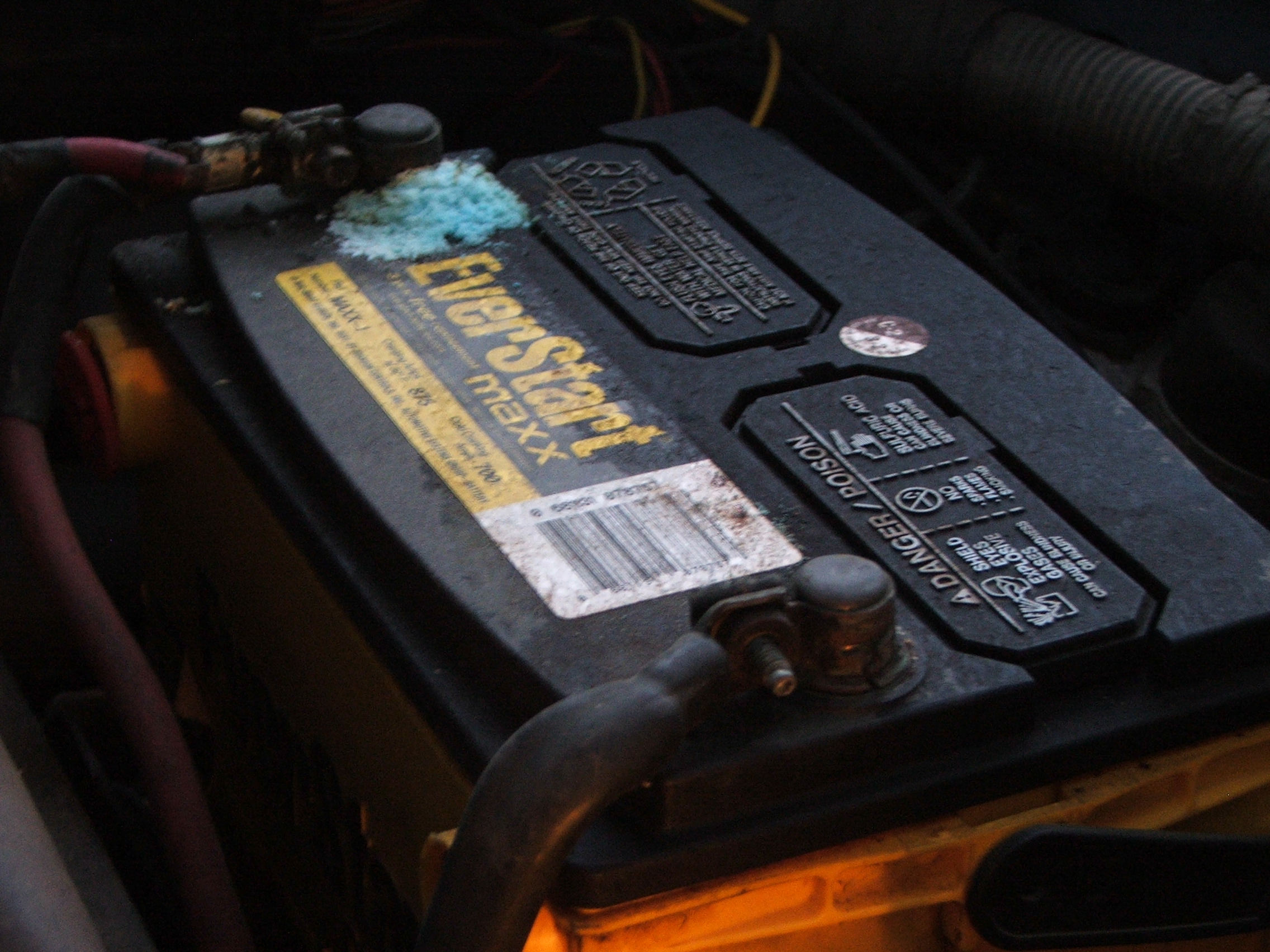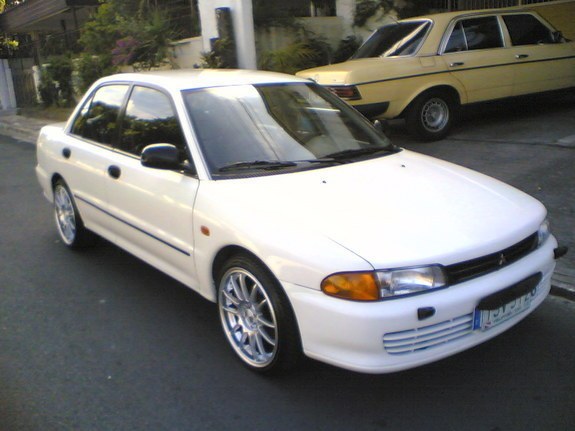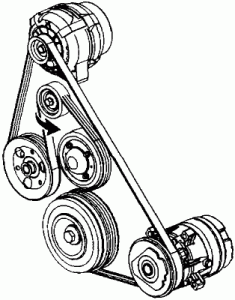Starter and Battery Issues
 Question:
Question:
My car suddenly would not start. It made a clicking noise when
I turned the ignition and the lights on dash/etc. came on when
I turned the key. I was able to jump start it easily, but it
wouldn’t hold a charge. I also cleaned the corrosion off the
battery and was able to start it…but then again, nothing.
I expected it was the battery and/or alternator. I took it
to a mechanic who insisted it was the starter and the battery/elec
system was getting a charge. He seemed like a decent guy.
But, then in the end…he replaced the starter and the battery.
Suddenly, he found a friend with a wrecked car and gave me that
starter for free…charging me 140 to install it and then the
battery cost/install. I am getting wildly different information
from people around me…some saying it would not be at all possible
to jump start that car if the starter were bad- yet others say it
could happen. Was he telling me the truth or have I just paid for
something that didn’t happen/not nec? Help?
Answer:
The clicking noise is the solenoid, which is usually part of the
starter. Over time the solenoid contact points will arc from the
current flowing through the connection and will not make a good
connection to turn on the starter. You hear a click, but the starter
does not turn over. Sometimes a jump start will provide just enough
of an extra boost to overcome that corrosion on the solenoid. It’s
possible that is what was going on in your case.
Regarding the battery, your mechanic more than likely put a volt meter
on the battery with the engine running, this would tell him if the
alternator was charging. He may also have done a load test on the
battery to determine health of battery. If your battery was over 3
years old, it was probably a good idea to replace it anyway.
With all that said, the friend with a wrecked car sounds shady, and
$140 for install of a starter sounds high to me, he was most likely
hiding the cost of the used started in there. Most cars should take
an hour or less to replace the starter, at a shop rate of $60 – $80/hr
with an independent shop. This scenario also makes me think he could
have been hiding the fact that he did not change anything (Did he show
you the new/old starter?) since he was putting in a used starter, it
would be hard to determine if it was actually replaced since both
would look used. Hope that makes sense, and don’t want to say for
sure that was his motivation, but it’s always possible.
Posted: 12th August 2016 | Author: Kevin Schappell | Category: Electrical, Engine
1995 Mitsubishi Lancer GLXI upgrades?
 Question: I have a 1995 Mitsubishi Lancer GLXI, fuel injected,what are the things I can do to improve its performance? things I can change and upgrade.. thank you for your time
Question: I have a 1995 Mitsubishi Lancer GLXI, fuel injected,what are the things I can do to improve its performance? things I can change and upgrade.. thank you for your time
Answer:
Not sure if you have the turbocharged version or not but will start out with suggested upgrades for both versions and then touch on the turbo only upgrades…
General upgrades on turbo/non-turbo engine.
1. Intake and exhaust. The basic upgraded which get your engine breathing (intake) and exhaling (exhaust) better. For intake, typically a cold-air kit, which allows the engine to pull from cooler outside air, as opposed to hotter under-hood air is best. Exhaust is usually personal preference, no need to go for exotic materials like titanium but stainless steel will provide longer life. Sound level is a preference, not always an indication of how well the exhaust performs. With all of the suggestions I give, I would check online forums for other owners suggestions. You can sometimes find good advice, group discounts on parts, or even used parts at a good savings.
2. Computer – Most car companies tune their engines for long life and err on the safe side when it comes to timing, fuel curves etc. There may be a chip or add-on tuner which you can add to give your car more performance.
3. Cam shafts – Not sure of your specific engine, but this would be my last recommendation however could be pricey. The camshaft tells the valves when to open and close, by telling the valve to open sooner, or longer you can get more fuel and air in to the engine, this will allow you to make more power. Not the easiest job to replace the camshafts, or the cheapest, so it’s probably the last step.
Now on to the turbo engine (if you have it)
1. I would look at increasing the boost with a boost controller. Most Japanese cars can be adjusted with a manual boost controller or electronic controller without having to mess with the ECU (Engine computer). This can be dangerous turning up the boost too much with the resulting pre-detonation being capable of melting pistons. It’s also possible to turn the boost pressure up too much and out running your fuel injectors. To keep the proper fuel mixture your fuel injectors will have to work extra hard to keep up with the extra air going in to the engine. It’s possible you will need to upgrade the injectors depending on how much boost you want to run.
2. Intercooler: Compressing air in the turbo produces heat, hot air makes less power in your engine since it’s less dense than cool air. A better intercooler will cool down the air after the turbo and allow for more power.
Good luck and let me know if you have any other questions,
Posted: 27th July 2016 | Author: Kevin Schappell | Category: Engine, Exhaust
No A/C Power Steering and Battery Light is ON.
Question: I have a 2004 Lincoln Towncar and my AC went out there was a smell like burnt plastic,then a knocking noise started when i start my car.Today my steering wheel is very hard to turn and the battery light stays on the car struggles to stay on.
I have a 2004 Lincoln Towncar and my AC went out there was a smell like burnt plastic,then a knocking noise started when i start my car.Today my steering wheel is very hard to turn and the battery light stays on the car struggles to stay on.
Answer: Most likely the serpentine belt has broken. Do not drive the car as
the water pump could be driven by that belt and overheating could occur. The belt typically runs the alternator, air conditioning compressor and power steering pump. As stated before, it could also drive the water pump, but most modern cars have the pump driven by the timing belt. Should be a $25-$45 belt and a fairly easy job to replace. Whoever does the work should check all pulleys and make sure nothing is seized. The burning rubber smell could have been from a seized idler pulley, tensioner or accessory pulley, which caused the belt to heat up and snap.
Posted: 24th July 2015 | Author: Kevin Schappell | Category: Cooling, Electrical, Engine, Heat & AC
Broken Timing Belt?
My question…
Do the rest of the belts like the water and alternator they are still working when I crank the car…should they not be working?
or the timing belt works independent from the others?
I also check the distributor rotor and it’s not spining with the cap off…. that’s why I think it’s the tming belt…
Any help will be appreciated…
Luis
Answer:
Yes, it’s the timing belt. The accessory belts are driven from the crankshaft. The timing belt is driven from the crankshaft as well and turn the camshaft/s. The distributor is also usually driven off the camshaft. So if the distributor is not turning, the camshaft is not turning, and the belt is broken. The same holds true for timing chains as well. Usually the chain will not break, but the teeth will wear off of the gears bolted to the camshaft or the crankshaft.
Posted: 29th October 2013 | Author: Kevin Schappell | Category: Engine
How to diagnose overheating engine.
Question:
I have a Ford F-150 1995 model it has a 302 in it. My question is, it keeps overheating I change the water pump about 6 months ago, it has a new thermostat also, the water wasn’t circulating in the radiator so I flushed it 3 times took it out and made sure everything was washed out of it, so I put it back in and the water is moving through it just fine now, so I figured I had the problem fixed well I don’t its still running hot . Do you have any idea what else it could be that’s making it run hot? I’m baffled and out of ideas. Hope you can help thanks. – Kirk
Answer:
Here are the steps I use when diagnosing an overheating issue…
1. Check the radiator cap with a tester. A bad radiator cap will keep pressure from building and can cause an engine to overheat.
2. Pressurize the cooling system and check for leaks.
3. Have the hoses been changed lately? A soft radiator hose can collapse and restrict flow of coolant to the engine.
4. If the radiator was plugged and required a flush, maybe the engine has a blockage as well. Was any radiator stop-leak product used in the past? They can cause issues with head gasket coolant passages and other tight areas.
5. I have had brand new water pumps fail shortly after install. It’s possible that at higher RPMs the impeller is spinning on the shaft, reducing coolant flow.
6. Check airflow, fan clutch or electric fan if equipped.
Overheating issues can be a real pain to diagnose. Many shops and owners just start replacing until they find the culprit.
Good Luck,
Kevin
Posted: 28th October 2013 | Author: Kevin Schappell | Category: Cooling, Engine
